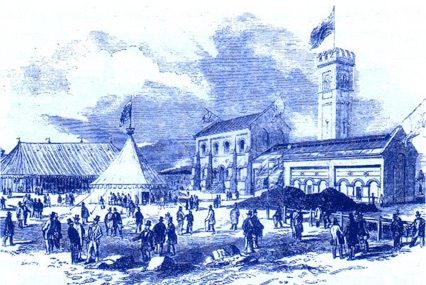Welcome to the fascinating world beneath the bustling streets of London. In this article, we will dive deep into the intricate network of water systems that lie hidden beneath the city’s surface. As we explore the subterranean world of London’s water networks, we will uncover the history, engineering marvels, and the vital role they play in supporting the city’s infrastructure. Join us on this captivating journey as we unveil the secrets that lie beneath.
A Brief History of London’s Water Networks
London’s water networks have a rich and storied history dating back centuries. The need for a reliable water supply became evident as the city grew rapidly during the Industrial Revolution. Prior to the development of modern infrastructure, Londoners relied on wells and rivers for their water needs. However, as the population soared, these sources proved insufficient.
In the early 19th century, visionary engineer Sir Joseph Bazalgette spearheaded the construction of a comprehensive sewer system to combat the rampant spread of diseases caused by unsanitary conditions. His innovative approach revolutionized London’s water management and provided a blueprint for other cities around the world.
The Grandeur of the Thames Water Tunnel
One of the most impressive feats of engineering in London’s water network is the Thames Water Tunnel. Spanning a staggering 25 kilometers, this underground tunnel serves as a conduit for fresh drinking water to flow from the Thames River to various parts of the city. Constructed in the 19th century, the tunnel’s brick-lined walls stand as a testament to the ingenuity of its creators.
The Thames Water Tunnel not only supplies water to London’s residents and businesses but also acts as a vital link in maintaining the city’s water pressure. Its efficient design ensures a steady flow of water, even during peak demand, and plays a crucial role in safeguarding the city’s water supply.
The Hidden Labyrinth of London’s Sewer System
While the Thames Water Tunnel handles the supply of clean water, London’s sewer system deals with the collection and disposal of wastewater. Beneath the city’s surface lies a vast labyrinth of tunnels, pipes, and chambers that transport sewage away from residential and commercial areas.
The main sewer network, originally designed by Sir Joseph Bazalgette, has undergone significant expansions and improvements over the years to accommodate the growing needs of the city. Today, this extensive system efficiently carries millions of liters of wastewater daily, preventing contamination and maintaining public health.
The Role of Pumping Stations in Maintaining London’s Water Networks
Pumping stations are an integral part of London’s water infrastructure, ensuring the smooth operation of the water and sewer systems. These stations are strategically located throughout the city and play a crucial role in maintaining water pressure, preventing flooding, and facilitating the movement of wastewater.
Equipped with powerful pumps and advanced control systems, these stations efficiently manage the flow of water, directing it to where it is needed most. Their constant vigilance and maintenance help keep London’s water networks running smoothly, even in the face of heavy rainfall or sudden surges in demand.
The Challenges of Maintaining London’s Underground Water Networks
Maintaining London’s underground water networks poses numerous challenges. The aging infrastructure requires regular inspections, repairs, and upgrades to ensure its continued functionality. Engineers and technicians work tirelessly to identify and address issues such as leaks, blockages, and structural weaknesses.
Unpredictable factors, such as ground movements, can also impact the stability of the underground networks. Continuous monitoring and maintenance are essential to detect and mitigate potential risks, safeguarding the city’s water supply and preventing disruptions to daily life.
Embracing Innovation for a Sustainable Future
As London strives towards a more sustainable future, innovative solutions are being explored to optimize the efficiency of its water networks. Technologies such as smart meters, leak detection systems, and real-time monitoring are being implemented to conserve water, improve infrastructure management, and reduce wastage.
Additionally, the utilization of renewable energy sources, such as solar and hydroelectric power, is being explored to power pumping stations and reduce carbon emissions. These initiatives not only enhance the resilience of London’s water networks but also contribute to the city’s broader sustainability goals.
Conclusion
In conclusion, the subterranean world of London’s water networks is a marvel of engineering, history, and innovation. From the grandeur of the Thames Water Tunnel to the hidden labyrinth of the sewer system, these networks play a vital role in supporting the city’s infrastructure and ensuring the well-being of its residents. As London continues to grow and evolve, the ongoing maintenance and innovative advancements in its water networks will be crucial in shaping a sustainable and resilient future. So next time you turn on the tap or flush the toilet, take a moment to appreciate the intricate web of pipes and tunnels that lie beneath, silently working to keep the city flowing.
